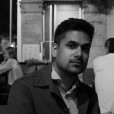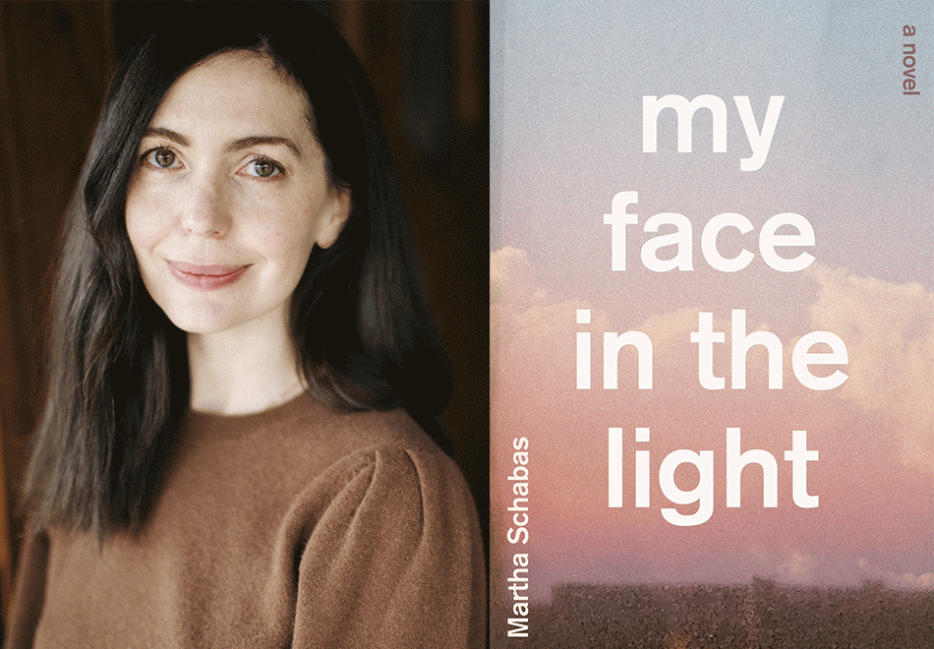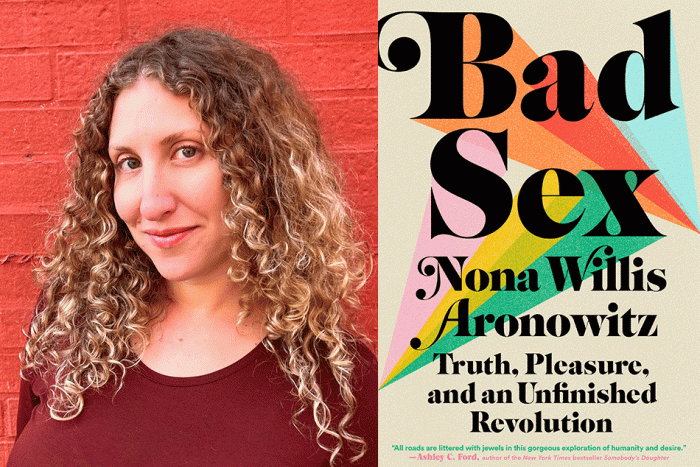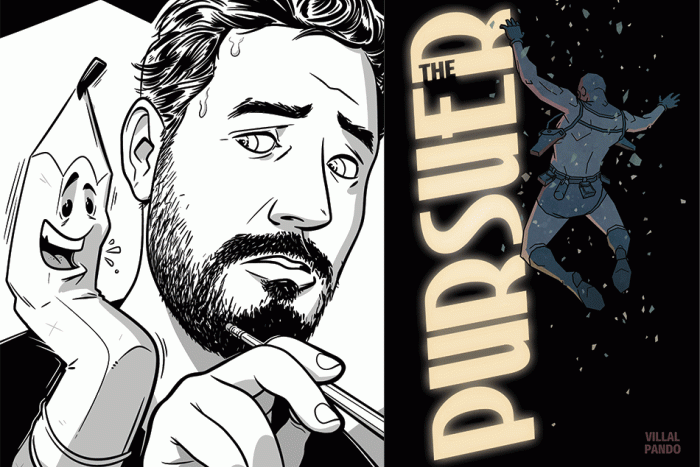Martha Schabas’s My Face in the Light (Knopf Canada) is a novel of retreat that never quite becomes escape. Justine, a young actress, is on the verge of withdrawing from her career, her marriage, and her already tenuous notions of who she is. After an odd encounter with a man on a train results in an offer of free rent in exchange for unspecified work, Justine leaves her husband and Toronto, landing in London without specific intentions, increasingly uncertain about her present as she begins to probe into the brief past she shared with her mother in this city.
Defying flight-from-a-staid-marriage conventions, My Face in the Light’s first line establishes that it’s a different fractured relationship that is central to Justine, secondary only to her attempts to investigate herself: “My mother is an artist and I am a liar.” That notion is immediately inverted: “Or, if I scratch the surface, my mother is a sick woman and I am an actress. How different is that from saying my mother is a sick woman and I am a liar?” Schabas’s prose reflects Justine’s poise and her poses to those who perceive her—the character’s grip on how she is seen onstage and in life—and the constant restlessness of her mind.
Naben Ruthnum: Justine’s mother, Rachel, is a painter, and this novel is rife with descriptions of paintings and the process of artmaking. Did you have a particular approach to describing Rachel’s paintings, or were you more concerned with Justine’s perception of her mother’s work?
Martha Schabas: I thought a lot about the French artist Sophie Calle when figuring out Rachel’s process as a painter. Calle is so good at manipulating the tension between real life and art, toying with the apparent boundaries of each, and that’s one of the novel’s major preoccupations. Rachel’s breakthrough series of paintings—the Heroine Series—came from her habit of following young women around London with a teenaged Justine, and then letting Justine mimic these women at home. This was vaguely inspired by Calle’s obsession with following and documenting strangers in Paris.
I wanted to find a way to make Rachel and Justine equally involved in the making of these paintings so that Justine’s contribution wasn’t just incidental and superfluous, but present and felt in the actual finished product. I wanted the paintings to somehow document all the trouble and intimacy in the mother-daughter relationship—Justine’s simultaneous adoration and resentment of Rachel—as much as they document these London strangers. Rachel and Justine collide in their curiosity about these women, and the paintings are meant to evoke this sort of triad of influence.
Artwork-wise, you’re not just talking about painting in the novel: Justine’s acting, initially encouraged by her mother and accepted by her as the course of her life from her mid-teen years on, is an enormous part of her character and of the novel. Just as you vividly describe paintings in the novel, you describe performances, rehearsals, moments; how did you approach writing about acting, and did you have any touchstone writers when you were examining how to execute this?
It’s occurred to me that the novel is a bit “anti-acting,” and I’ve wondered what real actors will make of it. I actually trained as an actor, which is a strange thing for me to remember—or admit—because I can barely connect with my former self who wanted that career. I was objectively a pretty bad actor, but I managed to fool people sometimes out of sheer work and will. But it always felt unnatural to me. And you see this a lot with mediocre actors, don’t you? It’s all muscle and ego.
With Justine, I wanted to explore the opposite: an actor who is utterly natural and ego-less. Justine is almost embarrassed by her talent. She comes by it so effortlessly and artlessly that it feels as though she’s exploiting a physical anomaly, like being able to pop her elbow out of joint. She feels like a malleable puppet, and I guess one of the tacit questions the novel asks is if acting is just complete submission to another artist’s vision and to what degree it can be considered artful at all.
It’s funny you should ask about touchstone writers because, while I can rarely pinpoint particular books as expressly influential, there is one for the sections about Justine’s acting: Out of my Skin by John Haskell is this very weird and smart novel about a man who becomes a Steve Martin impersonator in L.A. Haskell’s writing on physicality is so vivid, bizarre, and compelling. The physical detail of the narrator’s transformation, the encroachment of Steve-Martiness onto his whole body, and his eventual complete surrender to the aura of Steve—this was all very helpful to me in my writing of Justine’s work.
You’ve had a past life as a performer, and Justine in this novel is entertaining leaving performance of a different sort in the past.
This is all true.
Justine has an audition for the Royal Shakespeare Company that she deliberately turns away from. In addition to a chance meeting on the train, this non-audition sets the book’s action in motion. What is Justine opting out of in this moment?
She’s starting to opt out of everything, just as you’ve implied. Justine feels like a fraud in all aspects of her life, and walking out of her career as a literal fraud, i.e., an actor, signifies her first step towards truth-telling and figuring out who she really is.
Your first novel, Various Positions, was about a younger artist at a different crisis point in her life and career. Something I noticed about the life of that very adult novel, after I’d read it, is that it was marketed as YA in the U.S., due to the character’s age. What did you make of this decision? Does your prior protagonist have links to Justine?
It still depresses me to think how wrong everything went with the publication of Various Positions in the U.S. The novel is about a fifteen-year-old girl whose misunderstanding of sex in a patriarchal world leads her towards some outrageous behaviour. The novel was marketed as literary fiction in Canada, which is how I hoped things would pan out in the U.S. Instead, I got only one American offer and it was a YA imprint. I hemmed and hawed but eventually agreed, because my only real hang-up was my pride, and that seemed petty. I hoped that, irrespective of the label, the book would find the right readers in the U.S., but maybe that was naive of me. I didn’t know what a YA label would connote, that it imbued the novel with certain moral expectations that it was never intended to fulfill. The novel is anything but morally instructive. I still hope it will find the right American readers one day.
I definitely think there are implicit links between Georgia, the protagonist of Various Positions, and Justine, despite the fact that the former finds her entire sense of identity in her art while the latter feels lost in hers. Maybe their similarities are more tonal. They’re both contemplative, introspective, living at a kind of remove from everyone else. With Georgia, the stylistic challenge was limiting her understanding of the world, distilling her rawness and naivety. With Justine I wanted to do the opposite. I wanted a sophisticated thinker who expresses herself eloquently on the page.
You’ve written from the point of view of dancers and actors; do you actively resist writing from the fictional perspective of a writer?
Ha, no. I wouldn’t call it active resistance. But these mediums—dance and theatre—aren’t just there to give my protagonists something to do. They interest me for really specific reasons, and I analyze them extensively in the books. They’re both very physical mediums and, in that sense, provide a kind of foil to writing. They both suggest something more instinctive than writing, something bodily, primal that feels almost “pre-thought,” and I was attracted to the challenge of vivifying that in prose.
The physical beauty of Justine’s mother and husband are prominent in the novel—and her own looks are remarkable, including her scar. How do beauty and “flawed” beauty figure into your telling of Justine’s story as both an artist and a person?
I wanted Justine to be unreliable in her appraisal of appearances, both in her reverence of other people’s beauty and in her perception of her own scar. She clearly has a complex about the scar and is convinced it makes her unattractive, but people respond to it quite differently throughout the novel, which gives it a sense of shape-shifting when, by definition, a scar is static, unchangeable. In fact, Justine superstitiously believes that she needs to monitor the scar constantly, for fear that it might get worse, to the extent that its terribleness becomes something of her own construction.
I wanted the scar to exist on two different levels in the novel—as a real mark on Justine’s forehead, but also as an idea that is constantly revisited and mythologized by both Justine and Rachel. In a sense, the scar is as much a work of art as any of Rachel’s paintings, and I wanted it to occupy that kind of creative space in the novel, to have the same uncanny power.
I’m curious about the degrees of neglect in the novel. Rachel is upset, perhaps rightfully so, when she sees the severity of the scar her daughter got while being taken care of by someone else and the inefficiency of the repair. Justine’s treatment of her husband when she decides she wants to be away from him is another, lighter, but perhaps just as permanent, form of neglect.
You’re right, neglect is a major subject in the book. I’m surprised you’ve pointed out the mishandling of Justine’s childhood accident by the woman caring for her. For me, the key act of neglect is Rachel’s abandonment of Justine, both before the scar-causing accident and when Justine is recovering. That incident, and Rachel’s absence, is the emotional underlay of the whole novel.
And you’re also right to suggest that history repeats itself. For all of Justine’s determination to be nothing like her mother, we learn that she is capable of—and has committed—quite comparable acts of abandonment, and not only towards her husband. Justine has always tied Rachel’s propensity for neglect to her self-centredness as an artist, and part of Justine’s emotional journey is the realization that that’s reductive.
The two floors of Max Haleemi's club speak of two different degrees of objectification, which are deeply entwined.
Yes, the novel keeps revisiting the tension between surface and interior, between what we look like and who we are and the ethical problems that arise from that relationship. It might be a very old-fashioned line of moral inquiry, but I don’t think it will ever cease to fascinate me—how completely irrelevant our appearances should be to our inner realities, and yet how impossible it is to accept that on a sheer phenomenological level.
Justine takes a pivotal photo towards the end of the novel, one that suggests her relationship to her mother could change. Were you suggesting a truth to this artform that doesn’t exist, at least for Justine, in her art?
I wasn’t contrasting photography and acting so much as suggesting that, for all of art’s failings at expressing truth, it’s still a powerful way of getting close to it. And art remains the most meaningful way for Rachel and Justine to communicate. The photograph references a few really key things in Rachel and Justine’s past, but it’s also a new work, full of its own implications, offering its own interpretation of the world. A photograph creates an everlasting present-tense, but this one gestures across time, too. It alludes to Justine’s history while suggesting that things are changing, that Justine has agency in the present and an artist’s control over what she sees.






